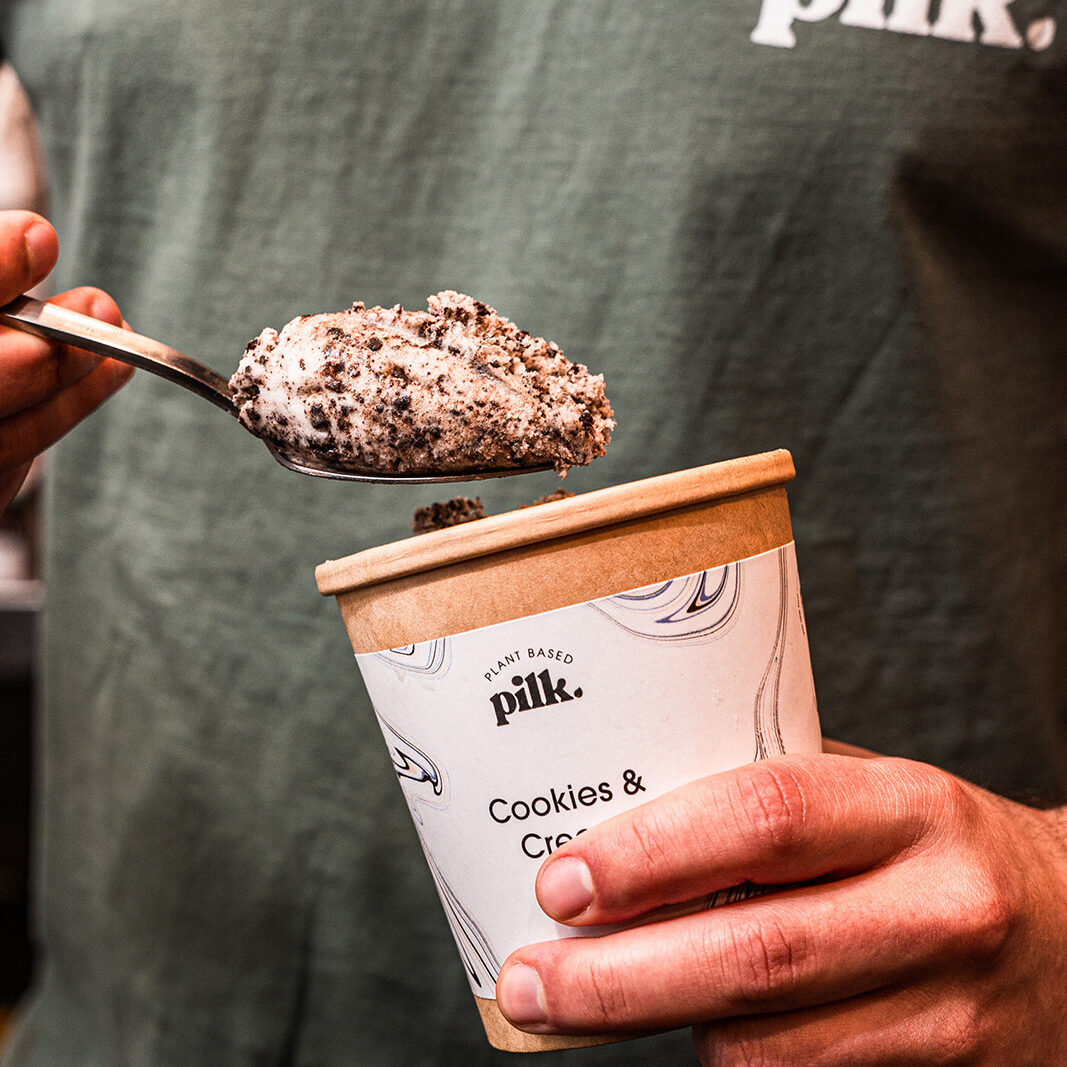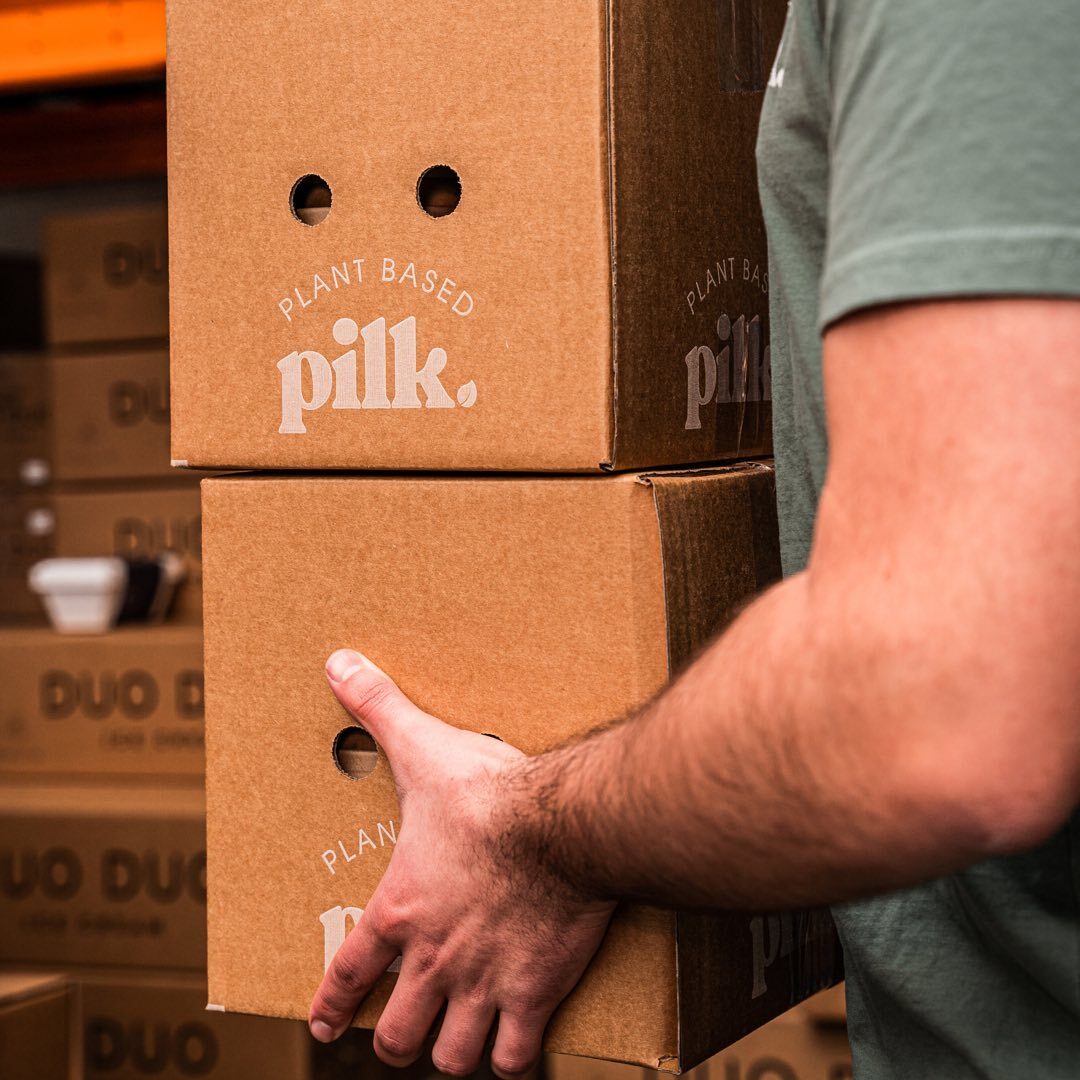ARTICLE / THE MAKING OF... SERIES
The making of...
Pilk
Sorry if we sound like we’re repeating ourselves here… BUT. Plant-based, low-alcohol and no-alcohol are trends that will not go away. These categories are growing year-on-year, filling a real need in the market. However, success in the space isn’t as simple as sticking on a label and doing some marketing spit. If anything, the one rule for all things food and beverage still applies; Taste. If you want people to fall in love with your brand… then you better give them a damn good reason to do so. This golden rule is at the heart of Alex Pagonis, Dylan Duong and Chris Duong’s plant-based gelato brand, Pilk.
Series
The making of... Series
Tags
Entrepreneurial
Start up
Welcome to The making of... To start, can you give us a brief background about you and any other founders?
I'm Alex Pagonis (Co-Founder), the guy behind the brand and a third generation gelato maker. I spent a number of years working as a management consultant at a top consulting firm (KPMG), gaining extensive branding and go-to-market strategy experience. Working with quite a few start-ups inspired me to do my own thing and the idea for Pilk was born.
Dylan Duong & Chris Duong (Co-founders) are my business partners and the gelato gurus that help bring Pilk to life. Dylan and Chris currently own and operate DuoDuo Ice Cream in Sydney and have been making waves in the dairy ice cream space with their nostalgic and Asian inspired desserts, specialising in deep fried ice cream balls.
What a combination. It sounds like you guys had a solid plan from the get-go. So, how did you come up with the idea?
I have a family history in ice cream and was always set on creating my own brand in the space, plus gelato is my absolute favourite food in the world. Why plant-based though? Well I woke up one day and was just unable to eat traditional dairy ice cream anymore as I would just bloat and feel ill.
So I tried every other dairy-free/vegan brand on the market and was severely disappointed as none of them hit the way they needed to. So we thought as a team, "surely we can do a better job" and got to work to see what we could come up with.

Dylan Duong & Chris Duong, Co-Founders of Pilk
Doing “a better job” drives so many startups. What research did you do to arrive at what you've got now and how did you test your product-market fit?
The plant-based grocery sector continues to grow year-on-year, so we knew something in the space would make sense. That coupled with the fact that people are fanatical about good gelato, we figured if we could crack something plant-based that actually tasted like the real thing, we'd be in good shape.
The reality is that most plant-based and vegan ice creams in the FMCG market are average and here's why:
They are icy, not creamy!
The aftertaste isn’t great and completely masks the actual flavour… a salted caramel ice cream should taste like salted caramel NOT coconuts!
They instantly feel compelled to define themselves as ‘refined sugar free’, ‘guilt free’ and ‘organic’. There were no plant-based ice cream brands that own the super premium, rich and decadent space… until now!
Other brands have only been serving a small segment of customers with many not really considering the broader mass-market. This is actually where we see the opportunity.
From a product R&D perspective we started with a blank canvas.
We started by looking at the characteristics of what makes a premium gelato and worked backwards. It needed to be creamy, smooth and have a fantastic texture that you wanted to binge, and it needed a rich flavour profile free from any underlying aftertaste.
So we looked to find a combination of the right ingredients that was capable of yielding a gelato that ticked all of these highly crucial boxes for us.


Your approach to developing the product-market fit is bang on. And we wouldn’t expect anything less hearing about your collective backgrounds and experience. However, on paper whilst that all makes absolute sense, what were the first iterations of your product like?
On reflection, our early batches seemed pretty average but I guess it was just super critical to get something out there to see if there was a market for a product like this whilst continuing to work on the formula in the background.
All of the feedback we received from customers was incredibly insightful and actually helped us land on the product that's in the market now.
Pilk 2.0 was almost a complete redevelopment from the first runs but we had such a sound base to work from and knew the exact changes we needed to make to get the gelato to where it needed to be.
We also moved the formula away from a boutique batch recipe into one that we could actually scale in the future.
It was definitely a case of embracing that classic tech founder approach of "If you're not embarrassed by your first iteration then you've launched too late"
Ha. We like that. Our next question is around funding. How did you go about funding everything?
We have boot-strapped Pilk and have not taken any funding to date. However, with two of the founders already having their own ice cream production facility, it allowed us to plug straight in without any huge upfront costs to test the concept in the market.
Everything is logical and there’s no real surprises to what you’ve done so far. What about the branding? What was your process and how did you arrive at where you are today?
Our initial approach to branding has first and foremost been product led. It was about getting Pilk in as many people's mouths as possible to give them that shock realisation of "holy crap - this isn't dairy?"
Our goal wasn’t to create just another coconut based, refined sugar free ice cream, but rather to reinvent plant-based gelato and introduce a rich, creamy and aftertaste-free eating experience that is on par with traditional dairy-based ice cream.
From a packaging and visual identity perspective we are currently back in the development process as we feel that our visual brand can and should be working a lot harder for us on shelf to resonate more with customers.
We've always had an idea of the brand we wanted to build, however it was only recently that we actually sat down as a team and through a series of internal workshops actually developed our overall brand strategy and have a crystal clear idea of who it is we want to be and how we’re going to get there.

That’s great to know. Founders often make the mistake of trying to develop the perfect branding, rather than creating a minimum viable brand… and ultimately test the product with as many people as possible before they embark on refining the brand identity. Having said that, how are you raising awareness for Pilk?
We have been creating early awareness through both organic and paid social posts across Instagram and Facebook as well as doing in-store sampling across selected stockists.
In 2022 our plans are to start working with more prominent foodies and bloggers in the space to share their experiences of eating Pilk!
We’d be interested to hear more about how the paid social campaigns worked out for you… but let’s leave that for another time. What would you say your biggest challenge or challenges are moving forward?
Our challenge on a daily basis is to get more people trying, talking and raving about Pilk. There is nothing fundamentally easy about changing the perceptions of mass market consumers purchasing plant-based products.
Ok, final question… knowing what you know now, what advice would you give another entrepreneur who is embarking on their own startup journey?
The best advice I can give - is to just start and don't worry about it being perfect!
If it's 80-90% there, just get it out into the world and get as much feedback (good or bad) as possible! You don't want to go to market with a 100% final product, you want your customers to feel super invested in the process and their thoughts and feedback heard! Make them raving fans of your brand!
I personally got stung with this and launched my first brand a year later than I should have and made every mistake under the sun. Needless to say, it failed, but I took some serious learning and it allowed us to considerably hack the R&D process and product launch, so much so that we went from ideation to our first products in store within 5 months.


